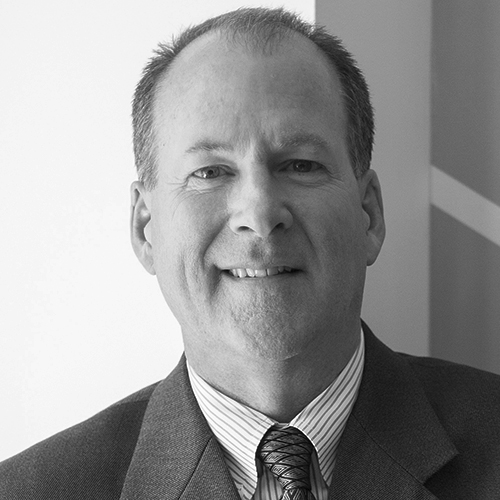When someone has to use a medical device—whether it be a stent, a cardiovascular implant, or something else—chances are they’re not thinking about how that device came into being. They’re not thinking about its marketing. They’re not thinking about its lengthy approval from the Food and Drug Administration (FDA). No, the patient’s thought process is likely more practical than that: “I have a specific health issue, and this device helps me address it.”
If you’re Yarmela Pavlovic, however, you think about those things a lot. As a partner at international law firm Hogan Lovells, her practice focuses entirely on the FDA’s regulation of medical devices.
“I help companies navigate what we call the premarket approval process,” she explains. “This covers product conception up to and including FDA clearance or approval. I help companies identify whether their products can be regulated by the FDA, and if so, what’s the right regulatory pathway.”
Recently, we checked in with her to learn more about this timeline, from the amount of time it usually takes for approval to the legally correct way to tweet about a new medical device.
How long does the FDA approval process for a product typically take?
It varies a lot depending on the specific product. For some products, it’s simple. For high-risk products, it is not uncommon for me to work with companies for years, from clinical trials to final product approval.
What does the process for the latter usually look like?
Let’s take, for example, a screening test for cancer that’s going to be used in average-risk people. The FDA views those as high-risk, because you’re applying it to a whole population of people, and if you miss somebody who has cancer, then you risk delaying diagnosis. Something like that often has a large clinical trial. So I would often help the company all the way from the early stages of product development, when companies are determining how the product is likely to be regulated. I help them arrange to discuss their product with the FDA and determine what clinical data we might have to develop.
Then we would help them with the actual development of that clinical study. That process, depending on the particular product, can take years. Some implant studies, for example, must go through a two-year follow-up before they can even apply for marketing. Then, from the time you submit a marketing application for the highest-risk products, it’s a one- to two-year process to get approval.
“You can get a new product to market, but in our healthcare system, you also have to get it paid for.”
That must present all sorts of obstacles. What’s the biggest challenge of the work you do?
One of the biggest challenges also happens to be the best part of the job, and that’s having to constantly learn about new technology. There are other areas of law where people have to have familiarity with technology, but the number of different technologies that we work on at any one time makes us unique. Doing my job effectively means having a pretty deep technical understanding of what we’re helping with.
What’s the coolest piece of technology that you’ve learned about or come across—perhaps something that you weren’t familiar with before?
I have worked on products that were designed to regenerate hepatic cells, or liver cells.
The liver is a fascinating organ. Even though it can be damaged by alcohol abuse or by various conditions that a patient has, it is also able to regenerate from even a small portion of the original organ. I once worked on a product that ultimately didn’t come to fruition, but it was designed to facilitate the regrowth of liver cells. Let’s say you have a person who is headed for end-stage renal disease but still has some healthy liver function left. You could take a portion of their liver and potentially regrow a whole new liver. That was the goal of this product: tissue regeneration.
Likely the most medically important product that I’ve worked on was the Exact Sciences Cologuard colorectal screening test. It’s a noninvasive, stool-based test to screen for colon cancer. It evaluates the presence of molecular and blood markers in the stool to identify whether the person is likely to have cancer or precancerous lesions. I say medically most important because if it is caught early, colon cancer can actually be completely excised. Most colon cancer is caught late-stage, and that’s because people don’t start having symptoms until the disease is far enough along that it’s causing symptoms and is going to be hard to treat. One of the things people are supposed to do is get a colonoscopy every ten years, but a lot of people don’t want to do that.
I also do a lot of work with companies that are developing artificial pancreas systems. Artificial pancreas technology is something that has been in the works for a decade or more and we are just about to see the first real meaningful products come to market. It’s an exciting time.
Once a product like that does hit the market, do you see the effect it has on patients’ well-being almost immediately?
It often takes a while. My husband is actually a primary care doctor, and it’s funny the number of times that he’ll say to me, “Oh, I learned about this cool new technology today,” and I’ll say, “That’s new?” You can get a new product to market, but in our healthcare system, you also have to get it paid for. As everyone is learning from the debates surrounding the Affordable Care Act, healthcare is an incredibly complex infrastructure. How things are paid for and the process for getting things paid for can take time. Even if you get the government to pay for something and you get Medicare reimbursement, you then also have to work through it with each private insurer as well.
That has an impact, not as much on product launch as product adoption. For some products, it’s not too hard, but for others, more novel products, you have to figure out how to work through that.
Then, there’s physician adoption. Even if you can get it paid for, you have to get the message out. You have to help doctors or patients feel comfortable with the new technology.
What’s your role in the marketing side of it? I imagine it’s difficult to promote a medical device on social media.
I do advise on promotion and advertising of medical devices, and it’s particularly tricky when you want to use social media.
It’s not that I advise on how to effectively do that with social media. I’m no expert on using Twitter to market your medical devices effectively. What I do counsel companies on is how to do that within the context of the FDA’s regulations because there is a pretty good set of rules around what you can say about medical devices as you’re promoting them. You can’t make overly broad claims that you don’t have clearance or approval for.
One of the key parts of the rules is that you have to have a fair balance of information. You can’t tell your customers about the top ten amazing benefits of your product without also saying, “Oh, and this is balanced by the fact that there’s risk.” That’s why when you see a drug ad on TV, at the end you see information about the potential adverse events that might occur. People laugh about those side-effect disclaimers, but you have to make an educated decision about how to balance those two things—the benefit with the risk.
That’s a challenge when it comes to a platform such as Twitter, where you’ve got 140 characters. And believe me, your marketing team is going to want to spend those characters talking about the benefits of the product. But from an FDA perspective, you can’t focus only on the benefits. You have to navigate that in a way that’s still meeting your creative and marketing objectives.

